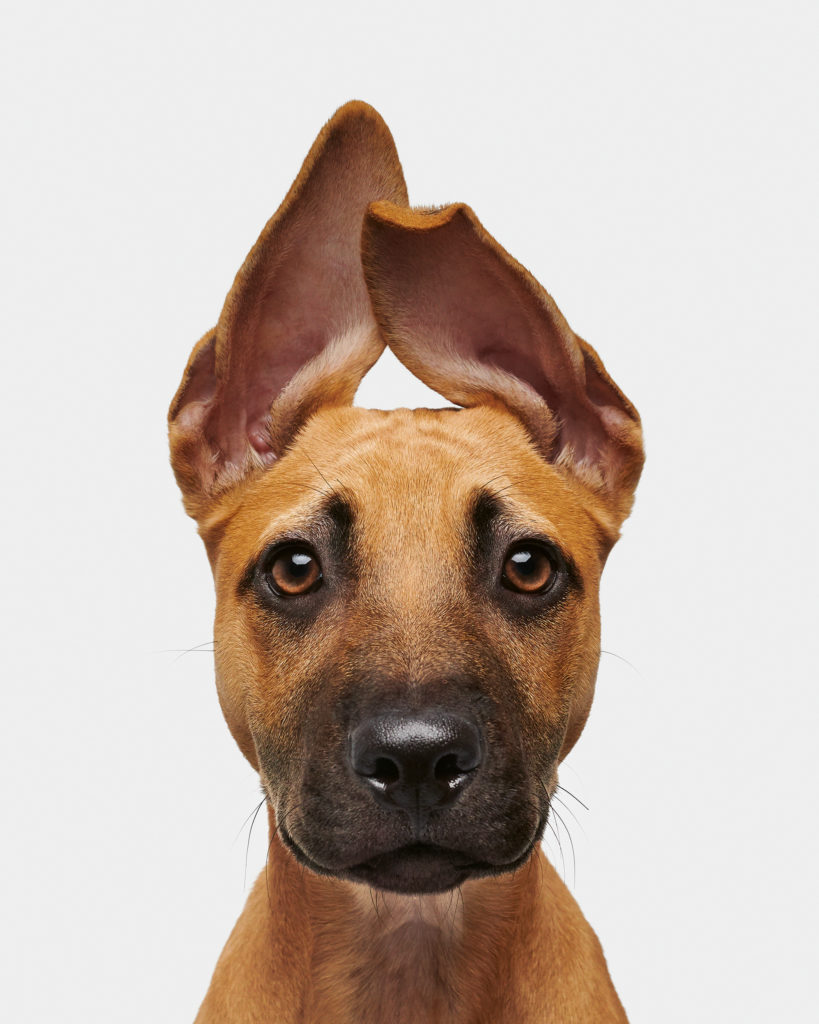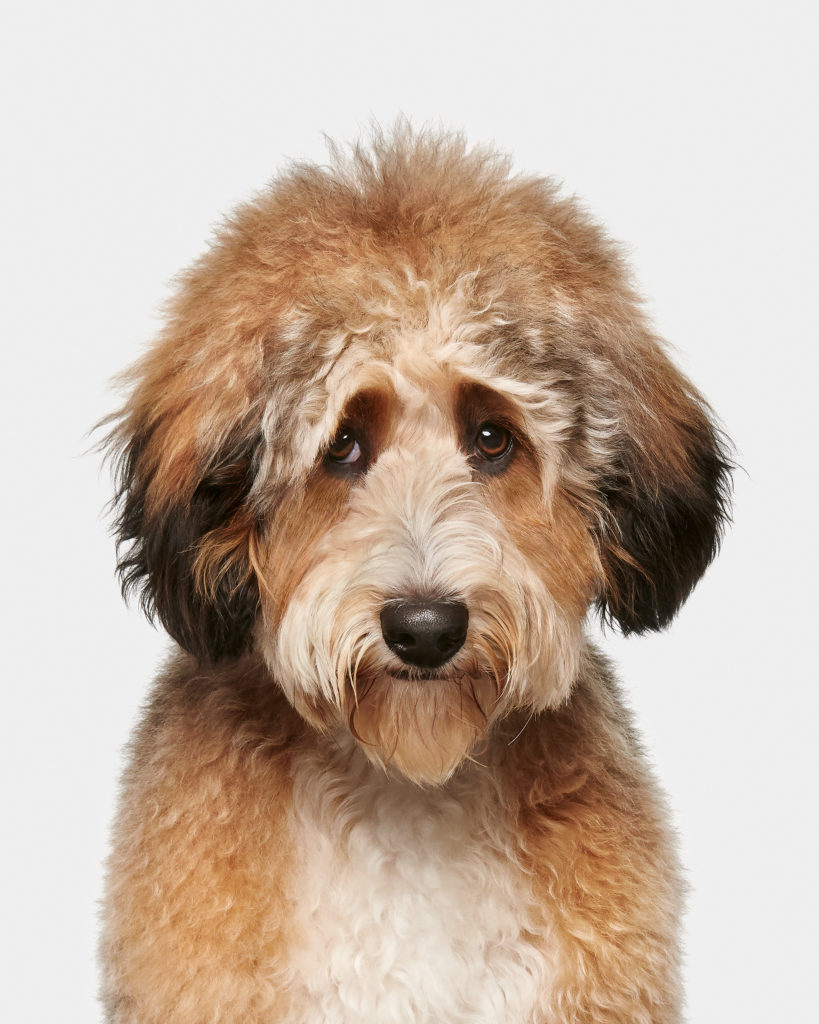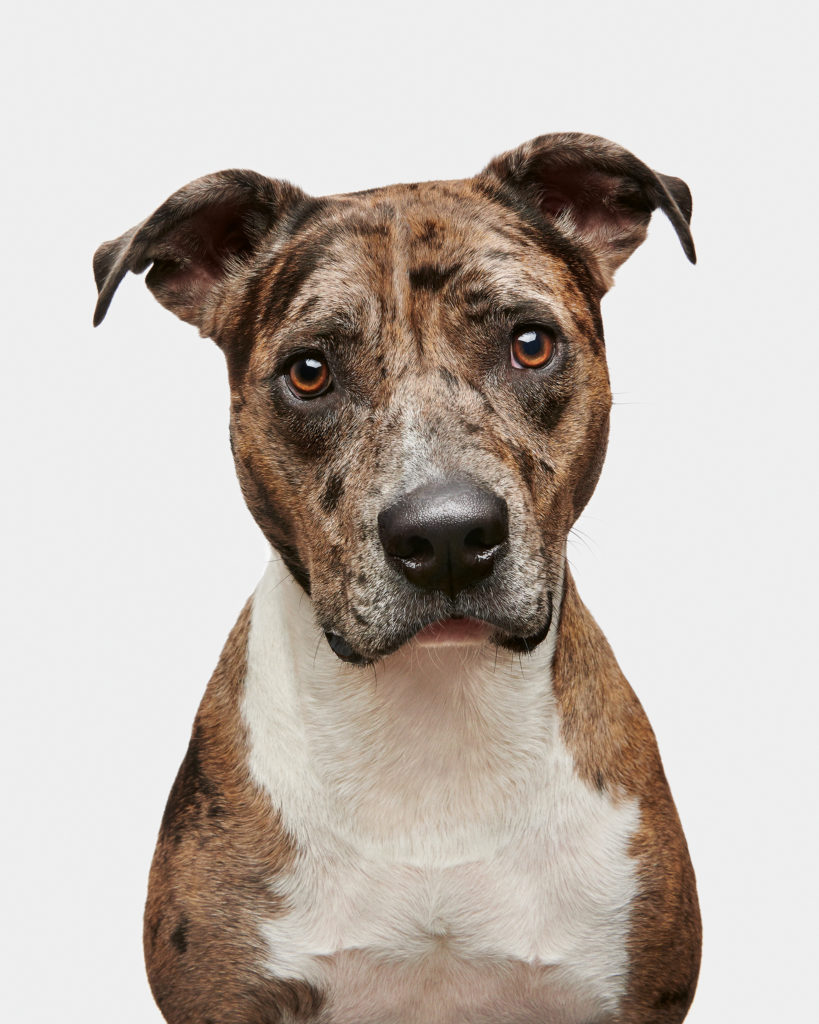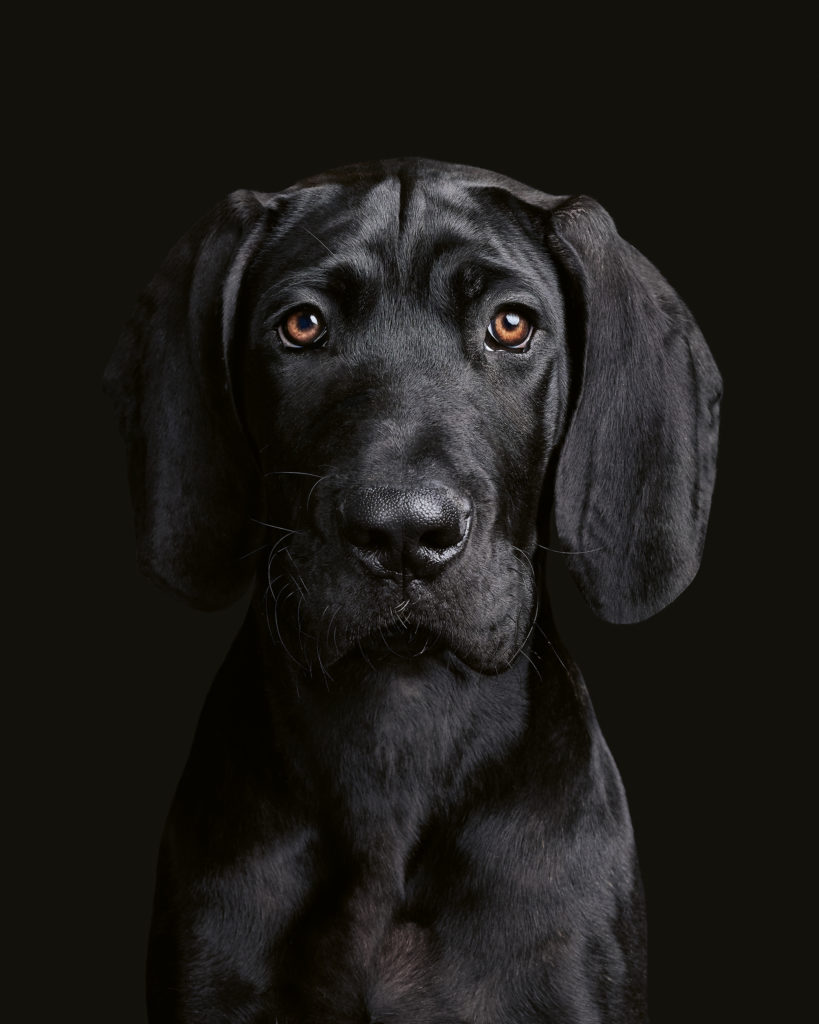


On June 17, 2020, when Annenberg PetSpace staff members brought out Clementine, a latte brown Chihuahua mix, Sam Lee was looking for signs she was the right dog for him.
Lee, 51, had made the decision to adopt a pup to ease some of the anxiety and loneliness of pandemic living. A public art department employee of the Los Angeles County Metropolitan Transit Authority, he found himself worried about lockdowns and contracting COVID-19. Divorced, with a 12-year-old son who only stayed with him part time, Lee was often alone, limited to Zoom interactions with colleagues, and longing for companionship. He hoped a dog — the right one — would help.
Sitting in the PetSpace’s yard, he and his son waited patiently to see if Clementine would approach them. After a few minutes, she did, and to the shock of the staff, licked his son’s hand. They’d never seen the Chihuahua do that. She only ever barked at other potential adopters.
That was the first good sign to Lee.
Shortly after, Clementine allowed him to pick her up. As he did, she settled and pushed her body against his chest. He felt her trust and natural acceptance of him.
That was the second good sign. He adopted her. “I just fell in love with her,” he says.
It’s likely Clementine felt the same way, finding in Lee the signs — and qualities — she herself was looking for in an owner. “Dogs and humans see the world in amazingly similar ways,” says Eric Strauss, whose job has been to put himself inside the heads (and behaviors) of animals as an LMU professor of biology and executive director of the LMU Center for Urban Resilience (CURes). He has also worked closely with the Annenberg PetSpace, which provides funding to CURes in order to help produce studies, papers and educational material to further the understanding of the human-animal bond.
That includes the human-dog bond Lee and Clementine experienced as they first met, a connection that’s been repeated across the world for centuries. It was a moment that reflected the millennia-worth of biology and psychology that has made the relationship between humans and dogs a singular one.
“There is no animal with which people have had a longer relationship than with dogs,” says Clive Wynne, a professor of psychology at Arizona State University who specializes in animal behavior. Wynne has worked closely with Strauss, co-authoring several papers (including one about dogs titled “Humanity’s Best Friend”) and currently collaborating on several upcoming projects. “There is also no animal with which people have a richer, more intimate, relationship.”
Some 15,000 or more years ago, our connection with man’s best friend began when a wolf and a human crossed paths and changed the trajectory of both species forever. Strauss — and others — believe it may have happened in two ways. Perhaps a visionary early human, seeing some domestic potential, removed a wolf pup from its litter to train and set it on an evolutionary trajectory toward dogdom. Alternatively, perhaps a lone wolf, already exhibiting proto-dog behavior or DNA, liked to scavenge at the edge of a human settlement, and one night received food from a person cooking meat over a fire, sparking an ever-increasing integration into human’s lives.

Whatever the encounter, it soon gave fruit to a mutually beneficial partnership: hunting. “Dogs are not much good at hunting on their own, and humans under certain conditions — like dense forests — are not much good at hunting on their own. But put the two species together and you’ve got this team that can do what neither partner on their own can achieve,” says Wynne.
Through dogs — and their keen eyes, powerful noses and barks ideal for signaling danger or prospective prey — humans could hunt better and benefit from the protein of the animal meat. That was evolutionarily important because more protein led to the further physical development of both species’ muscle and bone, which better enabled their mutual survival.
Better hunting had another critical effect. “It would have contributed to the phenomenon that humans have, and few other animals do: We have more food than we can eat in a given day,” says Strauss. “That changed everything about humanity. Once we domesticated plants and animals, we didn’t have to hunt for food continuously. It stopped our hunter-gatherer behavior. It stopped us moving around. It was the beginning of villages, which led to cities and walls and governance.”
Dogs have a powerful ability to understand, take care of and love us.
In helping humans find their place, dogs found theirs, too. “Every living being, every species, has its place in the world,” says Wynne. “Dogs made our world their niche.” In providing canines with protection, warmth and food, humans gave dogs the safety and comfort to grow in response to their human-driven environment. As a result, Strauss explains, they adopted our sleep patterns, our diets and even our diseases. Artificial selection led to a wide range of breeds.
They adapted as well to our needs of them. Hunting dogs became livestock protectors. They became man’s best friend. They even changed so they could be like us in another way, by developing whites around their eyes (called sclera) that allowed us to know where dogs are looking. During hunting that would have been vital, but as hunting phased out, it allowed us to see how they looked at the world and see ourselves in them — bringing both species closer together.
When Sam Lee brought Clementine home to his apartment, the Chihuahua tentatively explored the kitchen, living room and bedrooms. Lee and his son again gave her space, and again, in time, she approached them, jumping on the couch where they offered her treats, and they stroked her rich brown fur to reassure her and bond. Soon, Clementine rewarded them: She stretched her neck high to reach Lee’s son’s face and began licking.
Clementine showed affection for Lee, too, when that night she came to his bed and reached up with her front legs. He hadn’t been sure about a dog in his bed, but seeing her longing to be near him, he picked her up. She curled up at his feet and fell asleep.
Lee and Clementine quickly entered into a mutually caring relationship. He had to massage her every day to continue her recovery from a surgery to her left leg a few months before. And he stopped feeling alone, as his days filled up with walks, couch naps and movie nights, and her quiet presence in a bed under his desk as he worked. He felt himself relax, sometimes only needing to look at her to feel better. “There was such comfort in petting her, holding her and giving her hugs,” he says. The mental toll of the pandemic retreated. “I felt like my mood stabilized. I didn’t feel like I was on a roller coaster.”
When he did have the occasional, and expected, moment of sadness or anxiety, he noticed Clementine could tell. She’d hop on the couch next to him and quietly, but reassuringly, push her body against his, echoing the first time they connected in the PetSpace yard. In such a simple act, Clementine and Lee were once again also channeling something deeper in the human and dog relationship.
Adoption rates have soared … not just because people need emotional support, or social interactions, but help with their state of mind.
Dogs are uniquely calibrated to humans. Brian Hare, an evolutionary anthropologist at Duke university, and Ádám Miklósi, a dog cognition expert at Eötvös Loránd University in Budapest, have argued that through domestication dogs acquired a special type of cognition that allows them to understand human beings. Wynne has developed an alternative theory, arguing that dogs simply have a singular proclivity for loving other species. “They have no other way of being but to be empathetic, concerned and caring,” says Wynne.
Either way, the effect is — and studies bear this out — that dogs have a powerful ability to understand, take care of and love us. Those abilities became increasingly drawn upon as the structure of human society changed over history. Despite being a social species by nature, we began separating ourselves geographically and generationally, becoming smaller and more distanced units, notes Strauss, drawing on his understanding of the developmental history of urban ecosystems. As we became more isolated, less communal, we’ve become more lonely. Dogs’ capability for love and reading us is now all the more essential. “We rely on our dogs for the emotional support and protection against loneliness to a degree that’s never existed before,” says Wynne.
That support comes from the comfort of their love presence but also something biological. Oxytocin, informally known as the love hormone, is released in our bodies when we have close interactions with people we have a strong bond with. For example, new couples or mothers breastfeeding newborns are proven examples. But it’s not limited to just people.
Studies have found that when a dog and their owner look at each other, oxytocin is released. Because stress hormones are slow to break down, lingering in our blood for days, oxytocin can offer counteraction and prevention. “I call it changing your chemistry,” says Melinda Weaver, an LMU postdoctoral fellow with CURes who specializes in animal behavior and was a dog trainer for 10 years. “Your dog can give that to you, and you can give that to your dog.”
Touching also has a powerful effect on us. “Think of all the nerve endings in your hands that are stimulated when you stroke the fur of an animal. You’re getting thousands of signals every second that are overcoming some of the other signals you have of worry or anxiety,” says Strauss. “We get that touch; it lowers our blood pressure, lowers our heart rate and increases oxytocin.”
Dogs’ ability to know us also means they know when we may need them in that way. It’s why Clementine could sense when Lee needed comfort. “Because of things like body posture, odors we’re giving off, sounds we make, they are tuned in to our emotional state. When we’re not doing well, it draws upon a suite of behavioral responses in them — from their paternal response to the concern about their safety as their pack leader is suffering,” says Strauss.
That’s both an emotional and evolutionary reaction, says Wynne. “Your dog sincerely loves you and is sincerely concerned when you are in distress, and yet that is also an evolved capacity that evolved precisely because it placed your dog’s ancestors in a good position to survive.”
It’s no surprise, then, that adoption rates have soared during the pandemic, with centers like the Annenberg PetSpace barely keeping up with demand. Not just because people need emotional support, or social interactions, but help with their state of mind. “I’m of the opinion that a strong relationship with an animal is helpful to our psychological worldview,” says Strauss. For people like Lee that has proven true during the pandemic, offering a form of survival different than the one humans and dogs shared 15,000 years ago, but nonetheless important. Lee can’t imagine what the pandemic would have been like without Clementine. “I think I would be really depressed, to be honest,” says Lee, who even adopted another Chihuahua named Mika in November 2020. “Without them, I think it would just be suffocating.”
When asked what underlying biological or behavioral drive would have led Clementine to accept Lee and his son over other prospective adopters, Strauss has a theory. As a puppy, at some point Clementine absorbed a smell, a hand motion, a display of emotion that she attributed with the world being OK. It’s possible, he says, that Lee or his son echoed that memory. “She found someone who reminded her of life being good,” says Strauss. Clementine has done the same for Lee. Just like the other pandemic dogs have done for their owners, and as dogs have been doing since they were only barely not wolves anymore. They have made our lives better when we need them the most.
Alexander Huls is a writer based in Toronto. His work has appeared in The New York Times, The Atlantic, Esquire, Popular Mechanics and elsewhere. Follow him @alxhuls.
Randal Ford, whose portraits of dogs are featured in this story, is a commercial and fine arts photographer whose work has appeared in Texas Monthly, Audubon, Communication Arts and elsewhere. His “Good Dog: A Collection of Portraits” was published in 2020. Follow him @RandalFord.
